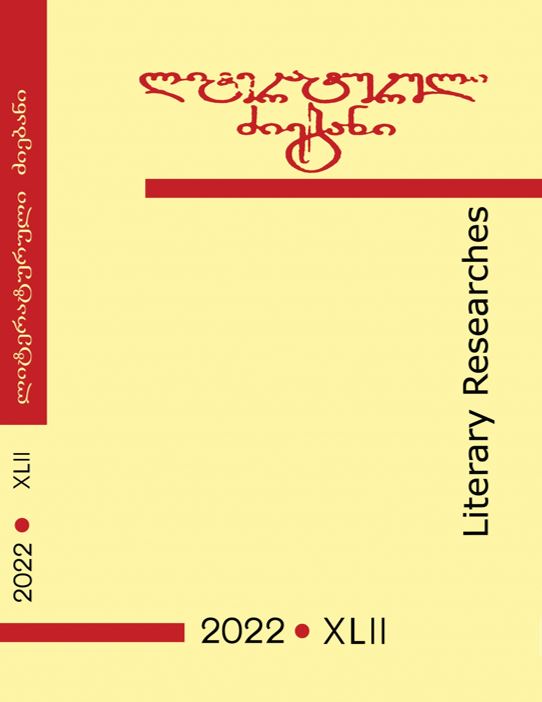Published 2022-04-30
Keywords
- Georgian Mythology,
- Dali,
- Amirani,
- Moon,
- Morning Star
How to Cite
Abstract
Comparative analysis of the versions of the Epos of Amirani (220 texts collected in the 17 historical-geographical regions of Georgia) confirms that it is a quite complex epic story. The legend is divided into three cycles: the birth of Amirani by hunting deity Dali , his exploits and the punishment of the hero. The story is based on various mytho –religious layers created and precipitated during the course of time, each of them being relatively independent but having the interconnection, where indisputably are presented the stages of development of the Georgian mythology.
The story is regarded to be derived from the old hunting ballade “Dali is Giving Birth on the Crag.” It must be noted that the story of the parturient Dali underlay the round dance song which is one of the oldest Georgian (Svan) round dance songs together with “Amirani’s Round Dance” or so called
„Hunting”. The story of kidnapping Dali’s newborn baby by the wolf must be the mythological motif of the ancient myth depicting the periodical waning of the moon or its eclipse (Virsaladze ,1964, p. 79 ). It is known that as a result of astralization a hunting deity was connected with the cult of the moon alike Artemis and Diana. Dali’s newborn child in the demand of the Goddess after her death is placed on the crossroad , sacred place of Triple Goddess (Diana, Artemis , Hecate) representing life cycles like the moon (birth, life and death).
Except lunar attributes Dali is bearer of the traits of the Morning Star (Venus), having copper teeth. Svan traditions presetved rituals of worship of Dali as of the Morning Star. In Georgian mythology Morning Star was a goddess of fertility. Amirani inherited not only the Lunar image of his mother but Solar symbols, too: being half of silver and half of gold, having the Moon and the Sun on the forehead , being of copper and forged in the fire. The hero swallowed by a dragon (a dev) with the help of the clan golden (diamond) knife freed captured Sun and Moon. His eyes look like two sieves (symbol of the sky / the Moon). In the versions of the Legend , Amirani after birth from Dali inherited a tiger’s tail as a weapon, too. This brings forward the necessity to continue the investigation of the mythological history of Dali. It must be noted that the name “Dali “ is phonetically close to the word ” God” or “Deity “of the nations living in the Northern Caucasus .Hence we can suppose that at some time“ Dali” was the common Caucasian highest Goddess with supreme rank and functions. After a time she was transformed into a local Georgian hunting deity.
Supposedly the investigation of the motif of Dali and a tiger could help in going forward to solve the problem of the genetic roots of the Goddess.

